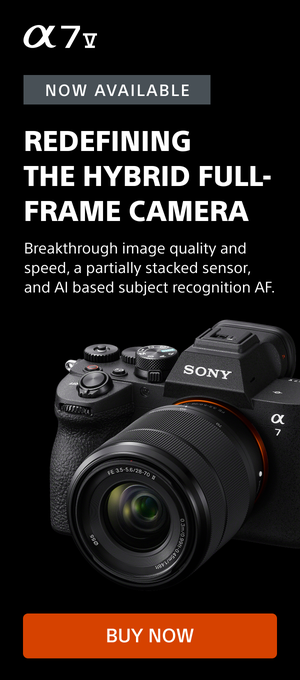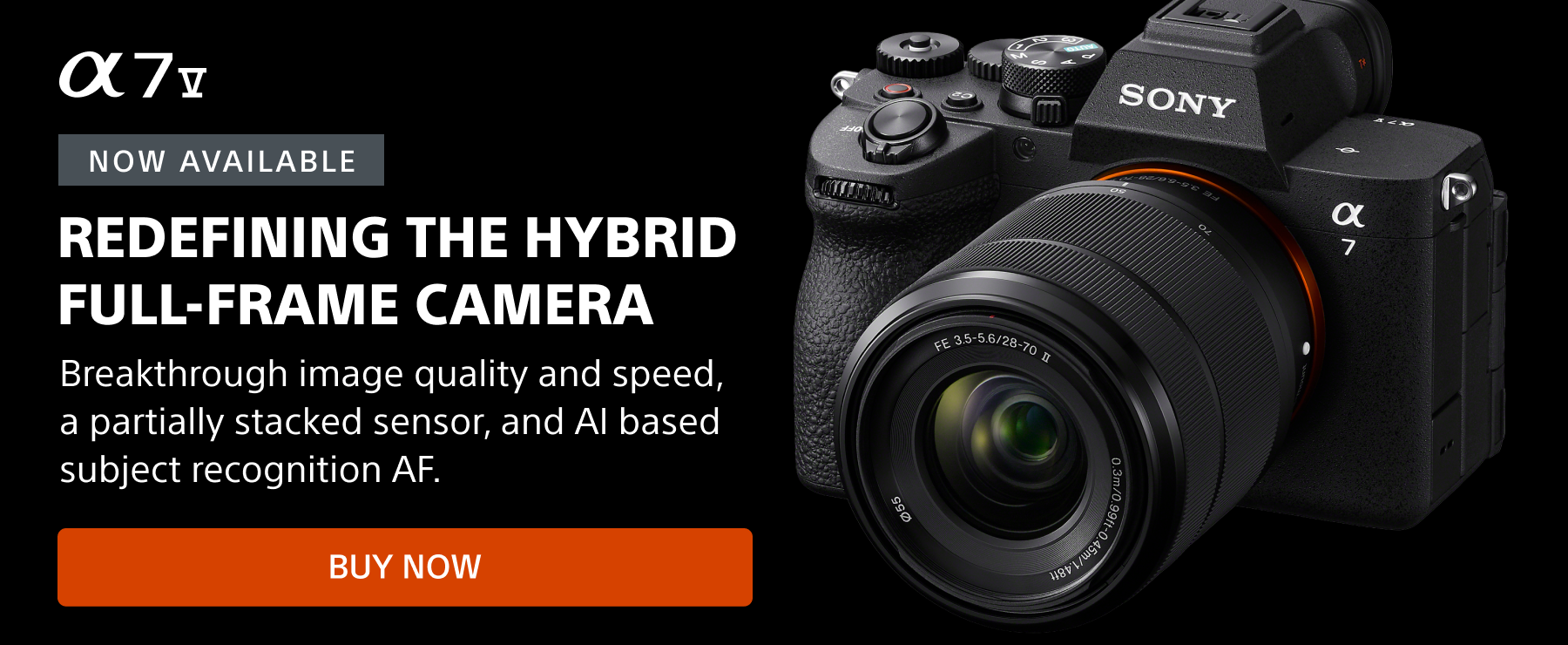Creator Brandon Li (@brandon_l_li) is a legendary travel filmmaker and YouTube educator. “I have a filmmaking channel where I teach all about how I do my solo run-and-gun style of shooting,” he explains. “I’ve made dozens of travel films where I hone sort of my own technique with minimal gear, with minimal crew – mostly just shooting with what I can fit in a backpack.” Watch the video below to gear more about Li’s gear choices, creative approach and the tips he’s learned through years of honing his craft.
Product Preview – In This Article You'll Find:
–Sony Alpha 7S III
–Sony 16-35mm f/2.8 G Master II
Li’s Gear For Travel Filmmaking
When Li is traveling to a location, he includes everything he would need for a full day’s shoot in his backpack. He packs his Sony Alpha camera, enough Sony lenses for that day, a gimbal, a monopod to get out-of-reach shots and a wireless Sony microphone. Everything he brings is engineered to be fast, compact and lightweight so he can travel and shoot fast without worrying about being slowed down by changing lenses or settings.
Li says he’s often asked whether to use zooms or primes for his style of shooting, and his answer is that it depends on the scenario. He explains, “The really quick rule of thumb I use is, when I have more control over the subject or over what I’m shooting, I use primes. When I have less control over what I’m shooting, then I use zooms. If I’m shooting in low light and I want to have the cleanest image possible, then I’m going to use primes instead of zooms. Even if I’m not shooting a subject that I have complete control over because I want that extra stop of light. Because most zooms only go down to f/2.8, primes will give you f/1.8 or greater. One reason I will go with zooms is if I’m shooting on a gimbal and I want to be able to quickly change focal lengths without changing lenses.”
A common rig that he likes to use for a shoot includes the Sony Alpha 7S III camera with the Sony 16-35mm f/2.8 G Master II on his DJI RS 3 Mini II gimbal. He says this setup will get him through around 60% of the shots that he would want to take on location. “What I really like is that the 16-35 doesn’t extend or contract very much as you zoom it, so that means I don’t have to rebalance the gimbal regardless of which focal length I use with this lens,” he says. “You can go between ultra-wide and portrait, you can go 16-35 all within the same lens, and that covers me on a lot of my docu-type shoots.” Another bonus? He says if you’re using the Sony Alpha 7 IV or Alpha 7C camera, you can switch into APS-C mode at 35mm to jump you in even more to 50mm.
Another benefit to having such a small kit is that he doesn’t look as professional and intimidating. “I want people to look at this camera as if they’re looking at me. I want them to think of the person behind the camera more than the gear itself. And the smaller my gear is, the less obtrusive it is, the more human the moments I get with the people in front of the camera will be. Because I want to have a human connection with the people I’m filming.”
Creating Mini Stories Within A Story
Li says he tries to make his films a bit different from other travel films out there by including mini stories in an overall montage of different locations and cultural elements. “I try to have, basically, mini films, within a big film,” he explains. “And the mini films each have a beginning, a middle, and an end – they have an arc. And the arc is something very simple. One thing that would be very familiar to everybody is practice to performance. So you could have rehearsal of a traditional cultural event, and that could be in the beginning of the travel film. And then maybe cut away to some other stories in the middle, and then toward the end of the travel film, come back to those same people in the climax of the film as they do some thrilling performance. And that creates a sense of narrative continuity even though the film itself doesn’t have an overarching narrative in the same way a traditional Hollywood narrative movie would.”
By creating these threads throughout a film, the audience subtly begins to pick up on the beginnings of stories. “And when there’s enough of these threads that start in the beginning and then pay off later,” he says, “then by the end of the film it feels like there’s some sort of satisfying narrative conclusion without the need for a traditional-style plot.”
Playing With Perception
He does a lot of playing around with the perception of time and the continuity of events in his films. Sometimes he will string together different shots that don’t necessarily connect, but finding that something that makes it feels like there’s a connection between all of them to make it all feel together. “As I’m editing these films and putting them together, I’m trying to create a state of a waking dream,” he explains. “So you’re watching it and you’re feeling like you’re in the real world, but at the same time there’s this element of something mystical or something otherworldly, or something spiritual that elevates the daily life that I’m showing you and makes it feel grander.”
Li does this by using techniques like timelapse, slow-motion or hyperlapse. “Using the Sony cameras, the way that I achieve that is I’ll either shoot my slow motion in S&Q mode which allows me to quickly preview the slow-mo in-camera, already slowed down so I know if I got the shot or not. I can sort of see if I’m getting the feeling that I want out of the slow motion. And I also use S&Q mode sometimes for hyperlapse. So not only can you shoot more frames per second with S&Q, you can also shoot less frames per second. And I slow down my shutter to approximate the 180-degree shutter when I’m shooting that slow frame rate S&Q mode, and then when it’s played back at a higher speed for me as I review it on the camera then I get the appropriate motion blur and it feels more natural.”
Capturing Authentic Audio
Audio is another piece of the puzzle that’s extremely important for Li’s travel films (let’s be honest, audio is important for just about any film.) Even though he’s not recording dialogue most of the time, there are just some ambiences that you can’t recreate with sound effects or foley. Recording the live audio while he’s shooting is the only way to get the authentic feeling of truly being there.
“The easiest way to do that is with an on-camera mic,” Li says. “I really like the Sony mics that I can just slip into the hot-shoe. They automatically connect. They automatically set the volume. They have auto gain control that’s very transparent, it doesn’t create pumping. So that way I know that as soon as I put that mic on the camera, as long as I’m within range of my subject, you know about 1.5-3 meters, then I can get usable audio for my editing.”
Choosing Filming Locations
Li has a criteria for choosing locations where he wants to make one of his bigger travel film projects. “They have to have a strong, thriving traditional culture. Traditional cultures are becoming more rare. You know modernity is sort of overtaking a lot of history around the world. So for me to find places that still feel like a piece of the old world is alive and well – that is an essential criteria.”
He continues, “But the other thing is they also have to have something exciting happening that’s related to their culture. There has to be cultural events that are visceral and that make good cinema. I like to get the pulse of the audience going, and to get that happening, I need things to actually be happening in the place”
If Li has the luxury of time when arrives at a location, he will spend time wandering around the neighborhood to get to know the place, the light, the people and their hospitality. He looks for interesting spots he might want to shoot because if he does all this in advance without the camera, then he feels it more deeply. If he doesn’t have that kind of time, then he will immediately just scout everywhere he’s going to shoot to look for any potential problems. He makes a list of everything that could go wrong (audio, lighting, permits, people walking a shot) and goes through to find solutions to each in advance so on the day of the shoot he feels more prepared.
Keeping Gimbal Shots In Focus
A question Li is often asked is, “How do I keep my gimbal shots in focus?” He says, “Gimbal shots are hard to keep in focus. If you don’t know how to keep your gimbal shot in focus, then just zoom out and shoot wide – that’s the easiest answer. If you’re really, really frustrated, nothing’s coming out in focus – shoot wider. And then if you feel like it’s too wide, by the way, you can always crop it in post, but you can’t crop out.
He continues, “If you get a little better at keeping stuff in focus, and you want to challenge yourself, start zooming in on that lens. You get more bokeh. It looks a little bit more cinematic. But it’s also harder to keep the subject properly focused throughout the shot. One thing that I do with my shots is I maintain a constant distance to my subject and I shoot in manual focus. So that means that I pre-focus before I start shooting. I use my custom key to zoom in. I do focus zoom to make sure that the subject is in focus, keep the same distance from the subject and then do my gimbal move accordingly.”
That will work as long as your subjects can stay the same distance as you, but what if the subject is moving around and there’s no way to avoid changing the distance? Li says in those cases he relies a lot on Sony’s autofocus. “The Sony Alpha 7S III has really amazing subject tracking. And I’ve gotten to know basically the characteristics of this focus over the years, and I know what is going to track properly and what might not track properly.”
He has a few tricks he says you can use. One thing he does is remap the record button on the top of his Sony Alpha 7S III to AF/MF toggle. He does this because he has a record button on his gimbal, which is Bluetooth connected to his camera. So now he can click that button on his gimbal to switch the camera between autofocus and manual focus.”
Want more filmmaking tips from Brandon Li? Check out his YouTube Channel and his film school at unscripted.com.
See more videos like this one on the Alpha Universe YouTube Channel.



